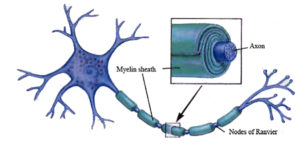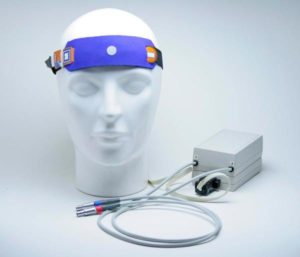I’m reading a new book, Head Strong by Dave Asprey, in a personal effort to lose weight — I mean, increase my energy! Just kidding — it’s all about losing weight and looking good. As much as I want to buy into this

philosophy, I am aware that I don’t really trust Asprey’s claims. Is it true that if you eat foods with polyphenols, so-called “plant chemicals,” such as blueberries, that the molecules will somehow digest, find their way into your brain, and “grow new neurons” (52)? If I ingest good fats with DHA, will that really mean I will ward off Alzheimers or other forms of senility (94)? I guess it’s just as magical as taking a statin for high cholesterol. It just seems too facile. In fact, diet is just one facet of Asprey’s bigger program, where he claims you can increase your energy, take off weight and keep it off, and improve your cognition, while raising a young child, running a company with 300+ employees, working out, meditating, using neurofeedback, and writing a self-help book.
Sounds like he has ADHD, doesn’t it?
I sincerely mean that as a compliment. It takes having ADHD to be able to jump from idea to idea, land on one for awhile, then jump to another one, to learn what this non-scientist has learned. He’s quite sincere and convincing, with his autobiographical confessions of being over 300 pounds at one point, and feeling really depressed. He’s definitely the “after” picture of health now.
Earthing, Earthling
There are many ideas that he discusses, as a self-taught “brain hacker,” that actually do make sense, and make me want to understand them more. He speaks a lot about the brain’s need for water, for example, to function at its optimum level for learning and memory. Many other points he makes are consistent with general good health advice — adequate sleep, consistent exercise, more green vegetables, and getting outside (“earthing” (!)).
HEG
He makes a big plug for meditation AND neurofeedback as helping maintain cognitive focus. Here is another successful person stating that these two methods help him produce creative output (pp. 184 –  186). “Hemoencephalography (HEG), which I use at home, is a type of feedback that focuses on increasing blood flow to the prefrontal cortex, the ‘human brain’. … When you do it right, blood rushes to the frontal lobe, the sensor detects the change in blood flow, and it provides feedback. With practice, you can start to grow the blood flow to your prefrontal correct so that you’re using your ‘human brain’ more often than not — even when you get stressed out. This type of neurofeedback is particularly effective for people who suffer from ADHD.”
186). “Hemoencephalography (HEG), which I use at home, is a type of feedback that focuses on increasing blood flow to the prefrontal cortex, the ‘human brain’. … When you do it right, blood rushes to the frontal lobe, the sensor detects the change in blood flow, and it provides feedback. With practice, you can start to grow the blood flow to your prefrontal correct so that you’re using your ‘human brain’ more often than not — even when you get stressed out. This type of neurofeedback is particularly effective for people who suffer from ADHD.”
Here’s a description of neurofeedback by Dr. Victoria Ibric, who practices in Pasadena, CA:
Sensors are applied to specific areas on the scalp and ears using a special conductive paste. These sensors transmit brain wave activity to an EEG amplifier that measures and records the frequencies being used to perform a particular task. These frequencies are divided into bands that are displayed on a computer screen, which appear to the trainee in the form of a video game or other video display. During Neurofeedback, the trainee effectively “plays” the video game using his/her brain to reach the mental state in which the desired brain wave is achieved. When the desired brain wave is reached, the brain is “rewarded” and learns to direct itself toward a more desirable performance level. The brain wave frequencies targeted are specific to each individual. There are no medications. The procedure is completely painless and non-invasive.
(More on HEG can be found in the article “Clinical usefulness on hemoencephalography beyond the neurofeedback,” by Serra-Sala, Timoneda-Gallart and Pérez-Álvarez; a YouTube video by Dr. Claire Albright, a psychologist in Orange County, CA, made back in 2011; a different YouTube video, made by a Dutch company, with excellent graphics… and an anti-medication slant – start at 12:25 to skip over the parts I’m sure you already know.)
This book has made me re-think the drive to “solve” and “cure” ADHD symptoms, especially in a school setting. I try to round up a student’s attention to apply it to perform that conforms with the school’s expectations. Perhaps not so obviously, I spend a lot of time outside the “regular” classroom putting information into my students’ heads. I don’t know how else to do it, if they missed it the first time, or if they just can’t absorb it while dealing with other competing thoughts that constantly bombard them in the classroom. Often, classrooms are places of real discomfort for people with ADHD, people on the autism spectrum, and people with dyslexia. They are bright, and either are already bored, or have already cleverly convinced themselves that the information isn’t important to their lives.
 People with these learning differences generally don’t thrive within typical institutional settings. It feels like we are often at cross-purposes: we punish them for not turning in homework, and not taking notes adequately, and not performing well on tests in high school — which prevents these bright students from getting into a good college — and even encourages them to doubt the benefit of going to college. They don’t know that they might (finally) be surrounded by like-minded people with more maturity who can bring those great, creative ideas to fruition. They don’t know that “it gets better.”
People with these learning differences generally don’t thrive within typical institutional settings. It feels like we are often at cross-purposes: we punish them for not turning in homework, and not taking notes adequately, and not performing well on tests in high school — which prevents these bright students from getting into a good college — and even encourages them to doubt the benefit of going to college. They don’t know that they might (finally) be surrounded by like-minded people with more maturity who can bring those great, creative ideas to fruition. They don’t know that “it gets better.”
As I read more about the non-medication treatments for ADHD, neurofeedback continues to dominate with the most positive reports. I have heard of one colleague’s client benefitting greatly from it, working with a local practitioner, a member of the Association for Applied Psychophysiology and Biofeedback. Since it takes time and commitment, like meditation, I believe that pursuing it will naturally heighten the student’s self-awareness of having ADHD, and understanding his or her mind better. I hope to become more familiar with this method, too, as a way to help families who are looking for ways to help their kids avoid failure yet keep the creativity.